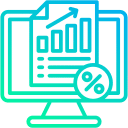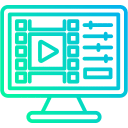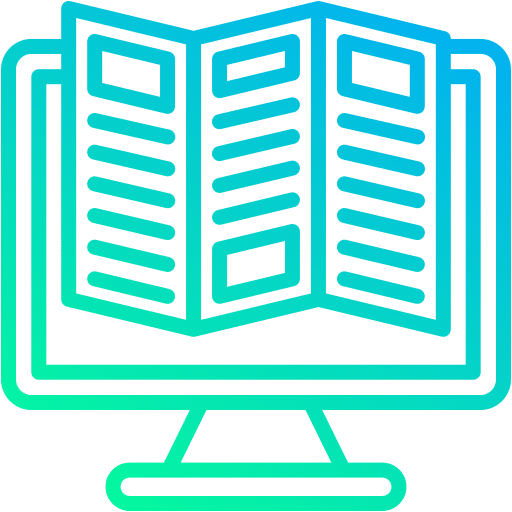Transitioning to a new Learning Management System (LMS) is a crucial step in ensuring your organization stays at the forefront of educational technology. As we progress into 2025, the importance of LMS migration becomes increasingly evident. This process, known as LMS migration, is essential not only for enhancing the learning experience but also for accessing advanced features and keeping pace with evolving training needs. By embracing LMS migration in 2025, organizations can leverage the latest technological advancements to foster a more effective and engaging learning environment.

What is LMS migration and why is it important?
It’s particularly vital in today’s environment, where equipping employees with a variety of skills and accommodating different learning styles is imperative. If your current training framework falls short in fostering skill development and adaptability, it may be time to consider upgrading your LMS.
Evaluating Your Existing Learning Management System and Educational Approach
Before delving into the technical details, it’s essential to thoroughly evaluate your existing LMS and overall learning strategy. This evaluation extends past mere technical factors, prompting organizations to consider the overarching narrative that underlies their choice to transition to a new system.
Knowing the ‘reason’ behind migration
Every transition to a new Learning Management System is driven by its own set of factors. It’s vital for organizations to comprehend these underlying motivations as they begin this process. Could it be due to a change in educational tactics, requiring a more dynamic and versatile LMS? Or is it to resolve issues with the existing system, like poor reporting features or an underwhelming user experience?
Evolving with New Educational Approaches
In the dynamic landscape of education and training, learning methodologies constantly change. As your organization develops, there might be a need to update your educational strategies. You could be transitioning from conventional classroom settings to a blended learning format or adopting microlearning techniques to suit modern learners. It’s crucial that your LMS aligns perfectly with these strategic changes, including the integration of social media platforms to enrich the learning experience.
Switch to Paradiso LMS: Effortless LMS Migration for a Better Learning Journey!
Evaluating the Effectiveness of Learning Investments
- Identifying Return on Investment Concerns: The move to a new LMS often stems from the need to see better returns from educational spending.
- Assessing Current LMS Performance: If your current LMS isn’t meeting expectations in terms of outcomes, it’s a clear indicator to reevaluate.
- Analyzing Learner Engagement and Education Quality: A crucial aspect is whether the current learning programs are effectively engaging and educating.
- Reconsidering Educational Strategies: When these issues arise, it’s important to think about altering your approach.
- Exploring New eLearning Platforms: Opting for a new eLearning platform can bring advanced tools and capabilities.
- Aiming for Enhanced Learning Outcomes: The ultimate goal is to revitalize your learning initiatives for better results.
Integrating Technical Elements into Your Strategic Narrative
When considering LMS migration, it’s vital to integrate the technical details into the larger framework of your organization’s objectives and vision. In presenting your migration strategy to stakeholders, focus on how the technical choices will bolster your evolving educational strategy. Emphasize the benefits such as enhanced learning outcomes, better user experiences, and more streamlined content management. This process involves consulting with various key players familiar with the current LMS, including subject matter experts, the Learning and Development leader from HR, instructional designers, LMS administrators, and the IT department. Additionally, training for administrators, end-users, and other relevant parties is a critical aspect of the migration process. The effectiveness of a new LMS is greatly boosted when users are well-versed in best practices.
At its core, migrating to a new LMS is more than just a technical shift; it’s a strategic move. By weaving technical considerations into the broader narrative of your migration’s purpose, you build a persuasive argument for this change. This method ensures that your technical decisions are in harmony with your strategic goals and also cultivates deeper comprehension and support for the migration among your team and stakeholders.
Remember, as you proceed with your LMS migration, it’s not just about reaching a new system; it’s about the journey of transformation and growth that comes from aligning your technical decisions with your overarching educational strategy.
These are the essentials for a successful LMS migration.
1.Options for Transferring Data:
Transitioning to a new LMS can be streamlined with the right resources. Once you’ve decided to make the switch, the next step is the migration process. Choosing an LMS provider that has a solid process for importing existing data is crucial. Decide whether to transfer existing user data or start anew with fresh courses and strategies. This is also a chance to update your content library, possibly incorporating multimedia or virtual reality elements. A successful data migration lays the groundwork for a great user experience moving forward.
2. Expertise in Implementation:
Effective implementation is critical, combining your planning and strategy. A dedicated implementation support team, well-versed in LMS migration, can ensure a seamless transition. Even if you have an internal team, partnering with a provider that offers specialized implementation support is beneficial. They can assist with data migration, API integration, documentation, and more, enabling a smooth launch of your new LMS.
3. Compatibility with Existing Tools:
I am text block. Click edit button to change this text. Lorem ipsum dolor sit amet, consectetur adipiscing elit. Ut elit tellus, luctus nec ullamcorper mattis, pulvinar dapibus leo.
Ensure your new LMS integrates well with tools you already use, like social platforms, videoconferencing, and third-party content libraries. Early confirmation that your new LMS will support these tools is key. Choosing the right LMS partner, like Paradiso, can make a big difference. They should focus on a seamless transition for all parties involved and be equipped to enhance your LMS experience.
Conclusion:
Migrating to Paradiso LMS offers a unique chance to transform your educational methods, improve how you present content, and tailor your learning strategy to meet changing demands. This shift is more than just a technological upgrade; it’s a pivotal moment to drive significant advancement and prosperity within your organization. Paradiso LMS enables this transformation by providing advanced tools and flexible features that align with your evolving educational goals. This move not only modernizes your approach but also significantly contributes to the growth and achievement of your organization.
Frequently Asked Questions?
What is LMS migration?
LMS migration is the process of transferring data, content, and users from one Learning Management System to another. It involves seamless transitioning to a new platform while preserving the integrity of existing information.
How long does an LMS migration typically take?
The duration of an LMS migration varies based on factors like the size of the organization, the complexity of data, and the extent of customization needed. On average, it may take several weeks to a few months for a successful migration.
What challenges might be encountered during LMS migration?
Common challenges include data integrity issues, user resistance, and potential downtime during the migration process. Proper planning, thorough testing, and effective communication can help mitigate these challenges.
Can all data be transferred during LMS migration?
In most cases, all essential data can be transferred, including user profiles, course content, and completion records. However, customization and compatibility between the old and new LMS may influence the migration process.











